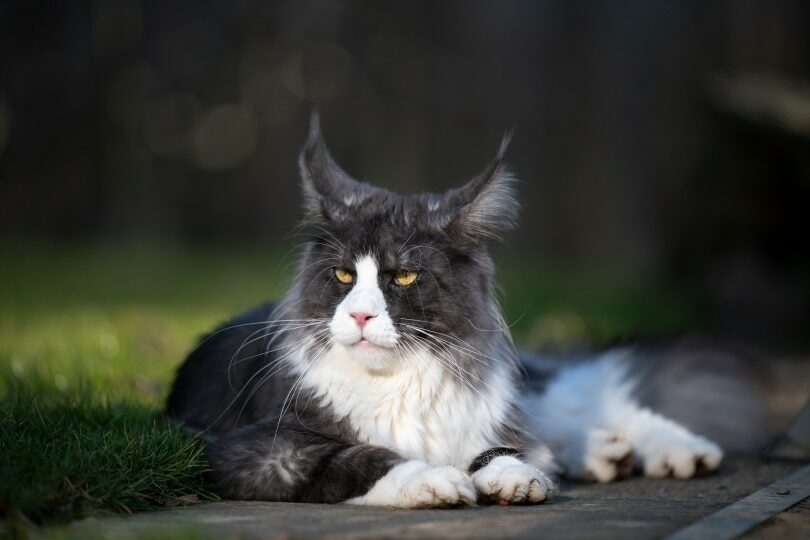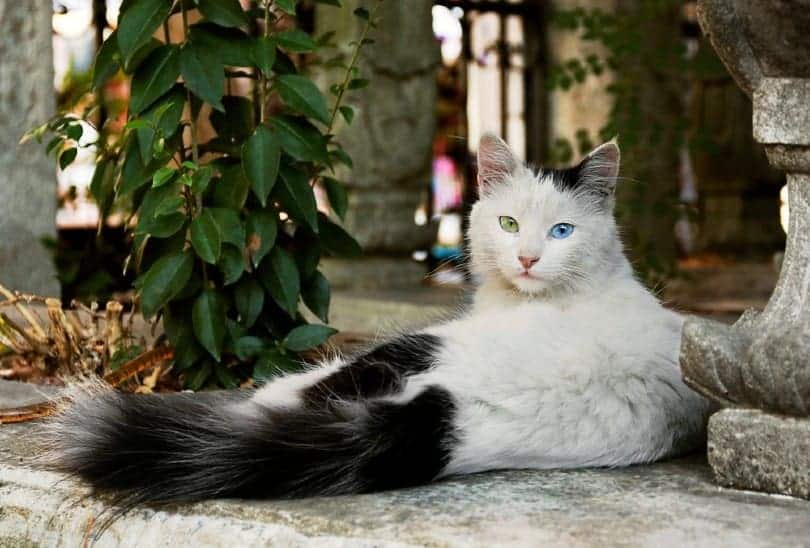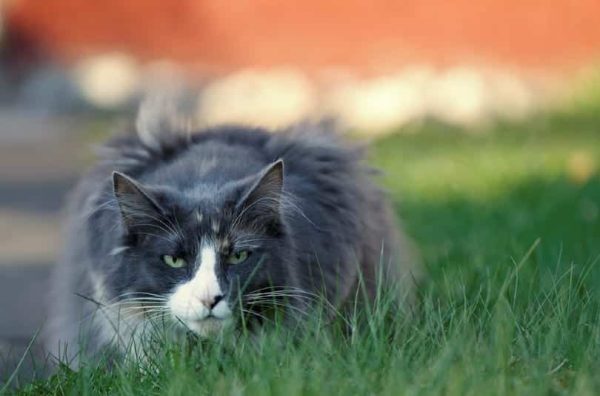Sylvester James Pussycat, Sr., or Sylvester, is an iconic character in the Looney Tunes universe. Sylvester is a tuxedo cat. However, that doesn’t indicate his breed since tuxedo is just another name for a type of bicolor coat that cats can have.
We can make some good guesses based on other clues, such as Sylvester’s other physical attributes, personality traits, and temperament. With that being said, we believe that other than being a tuxedo cat, Sylvester can be a Maine Coon, Turkish Angora, or Norwegian Forest Cat. Here’s a breakdown of how we got to this conclusion.

Sylvester’s Appearance
Along with his black and white tuxedo marking, Sylvester has medium to long hair and a long tail. He also has a bright red nose. While there are several causes for cats to have red noses, one factor that can cause a red nose is excitement or stress. This would make sense as Sylvester is often seen chasing Tweety, Speedy Gonzales, or Hippety Hopper.
Lastly, Sylvester is a rather large cat. While we don’t have his exact size measurements, we know he’s pretty big considering how large he looks compared to Tweety or Speedy Gonzales.

Sylvester’s Personality
We can see several sides of Sylvester’s personality in Looney Tunes episodes. He’s mostly depicted as a determined and tenacious antagonist as he chases around Tweety and other small characters.
Other animators and directors have Sylvester portrayed as a timid, scaredy cat, while some episodes show him being a trickster. Overall, it’s safe to say that Sylvester is a cat with a strong prey drive and is pretty tough as well. He also has a playful side and can even be a bit mischievous.
Possible Cat Breeds For Sylvester From Looney Tunes
Sylvester’s name was inspired as a play on words for Felis silvestris, the scientific name for the European Wildcat. However, he can’t be a European Wildcat because they have brown and gray fur with stripes that more closely resemble a tabby cat.
Several cat breeds can have the tuxedo coat. If we were to examine the breeds with long hair, we can make a good guess that Sylvester is one of the following breeds.
Maine Coon

One good guess for Sylvester’s cat breed is the Maine Coon. Maine Coons have a long coat that can also take on the tuxedo bi-coloring. They’re also large and can be very athletic. However, one hallmark characteristic of the Maine Coon is that they’re docile and can even get along with other pets, which isn’t a trait that Sylvester really has.
Turkish Angora

Sylvester can also be a Turkish Angora. While Turkish Angoras aren’t as large as Maine Coons, they have a very playful and active personality. They’re also athletic and can figure out how to reach places that seem impossible. So, many Turkish Angoras can end up getting themselves in trouble if they let their curiosity and determination get the better of them.
Norwegian Forest Cat

Norwegian Forest Cats have long, shaggy coats resembling Sylvester’s hair. They’re also larger cats and have playful personalities. They’re intelligent, excellent climbers who have no trouble getting to hard-to-reach places. However, they often get along with other pets quite well and are known to be very nurturing.
Conclusion
Based on Sylvester’s appearance and personality traits, we think that he could either be a Maine Coon, Turkish Angora, or Norwegian Forest Cat. All these cats have fun and entertaining personalities, just like Sylvester, and they all have medium to long hair and are known to have a tuxedo coat.
See Also:
- What Kind of Cat Breed is Bingus? Viral Video Cats
- What Kind of Cat Breed Is Tom From Tom and Jerry?
- What Kind of Cat Is Smudge From the Internet Memes? Iconic Kitty Facts
Featured Image Credit: Characters by Warner Bros. Entertainment Inc. All rights reserved to the copyright owners.











